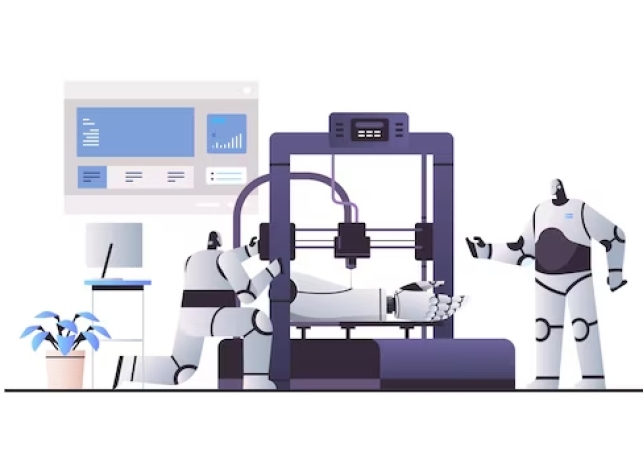
3D printing and AI (Artificial Intelligence)
3D printing and AI (Artificial Intelligence) are two distinct technologies that can complement each other and enhance various aspects of manufacturing and design processes. Let's explore how these technologies intersect and their potential applications:
-
Design Optimization: AI can analyze complex data sets and generate optimized designs for 3D printing. By leveraging machine learning algorithms, AI can identify patterns, simulate different scenarios, and propose designs that improve functionality, reduce material usage, and enhance performance.
-
Generative Design: AI can assist in generative design processes by creating and refining multiple design iterations. It can consider various constraints, such as structural integrity, weight, and manufacturing limitations, to generate novel and optimized designs that can be realized through 3D printing.
-
Quality Control: AI can be used to analyze 3D-printed objects and identify potential defects or deviations from desired specifications. Machine learning algorithms can compare scanned or digitized models with reference designs, detect anomalies, and provide real-time feedback to improve manufacturing accuracy and reduce errors.
-
Process Monitoring and Optimization: AI can monitor the 3D printing process in real-time, collecting data on variables such as temperature, pressure, and material flow. By analyzing this data, AI algorithms can optimize printing parameters, adjust settings, and predict potential issues to ensure higher print success rates and improve efficiency.
-
Material Development: AI algorithms can accelerate the discovery and development of new materials for 3D printing. By analyzing existing materials' properties and simulating their behavior under different conditions, AI can propose new material compositions with tailored characteristics, such as strength, flexibility, or conductivity.
-
Autonomous 3D Printing: AI-powered robotic systems can autonomously operate 3D printers. By integrating AI algorithms, these systems can handle complex tasks such as object recognition, path planning, and real-time adjustments, enabling continuous and efficient printing without human intervention.
-
Customization and Personalization: AI and 3D printing can collaborate to create personalized products. AI algorithms can process customer data, preferences, and requirements to generate customized designs, which can then be manufactured using 3D printing techniques, offering unique and tailor-made solutions.
-
Medical and Prosthetics: The combination of AI and 3D printing has significant implications in the medical field. AI can analyze medical imaging data to generate patient-specific models and guides for surgical planning. 3D printing can then fabricate implants, prosthetics, and medical devices customized to individual patients' needs.
These are just a few examples of how AI and 3D printing can intersect and bring about advancements in manufacturing, design, and various industries. The collaboration between these technologies has the potential to revolutionize traditional production processes, enable rapid prototyping, and drive innovation in numerous fields.
